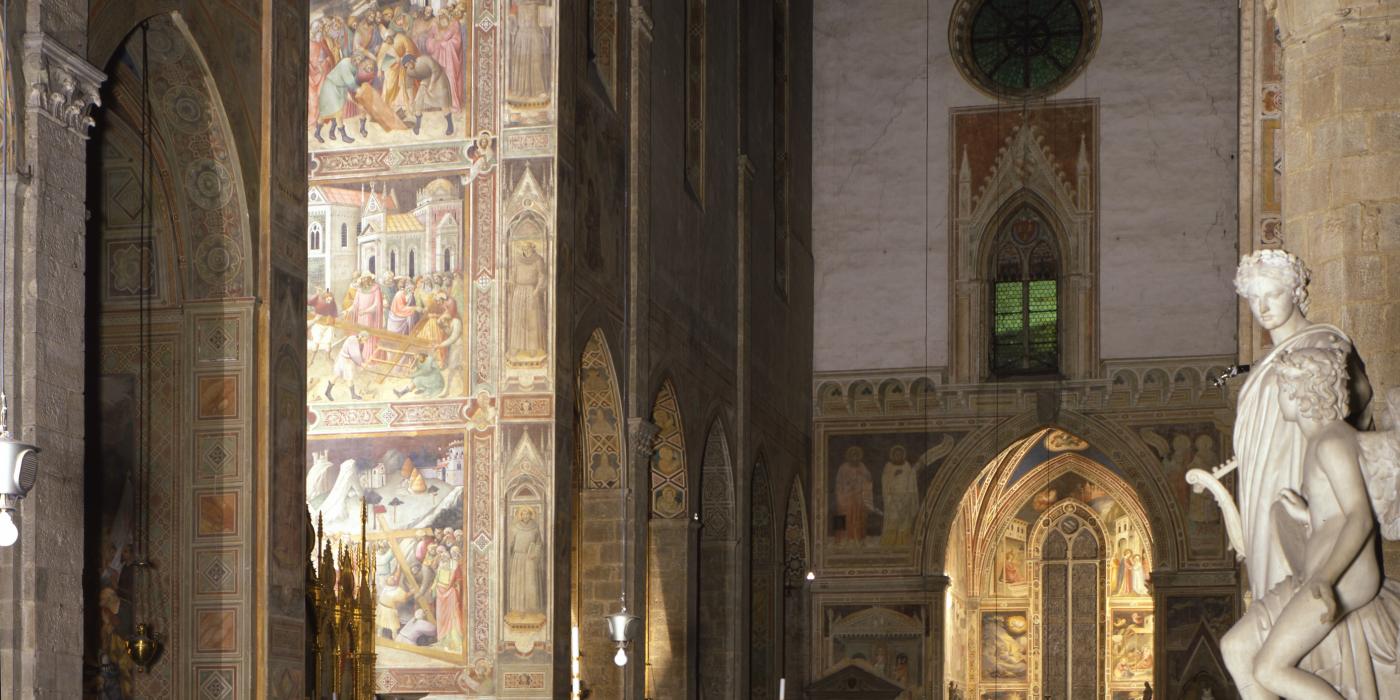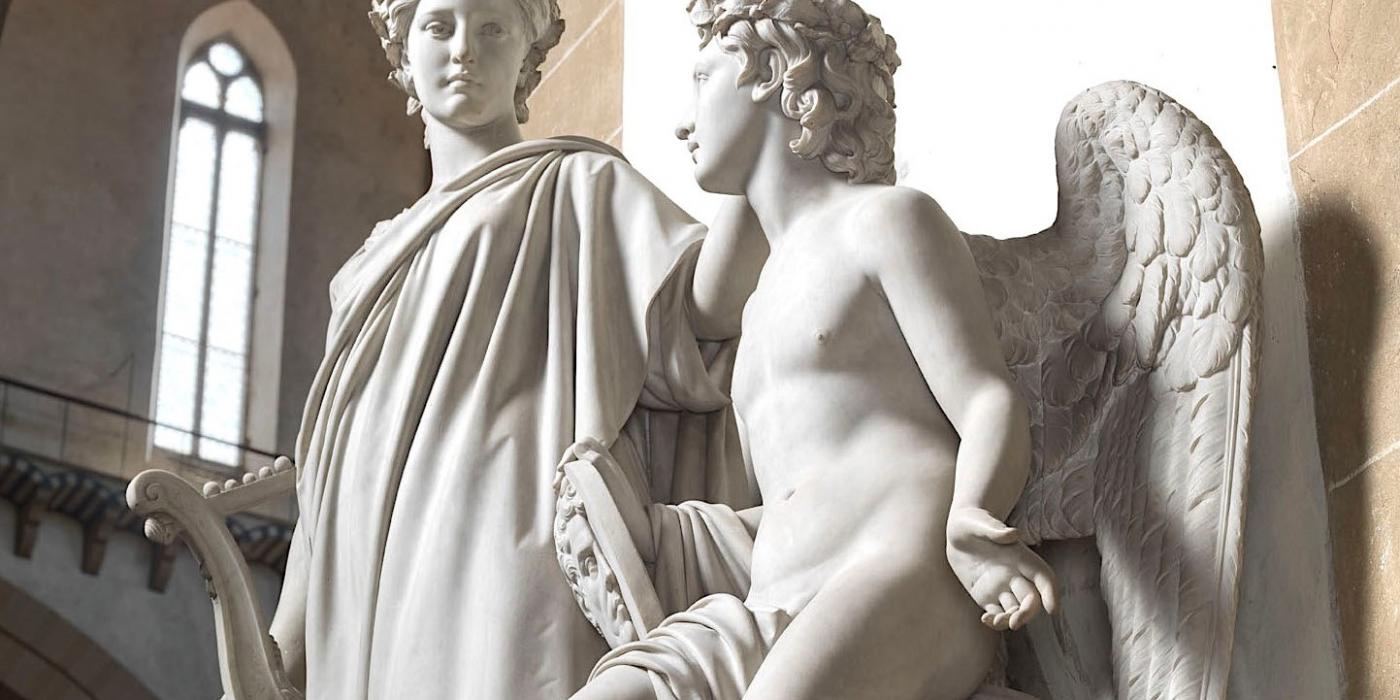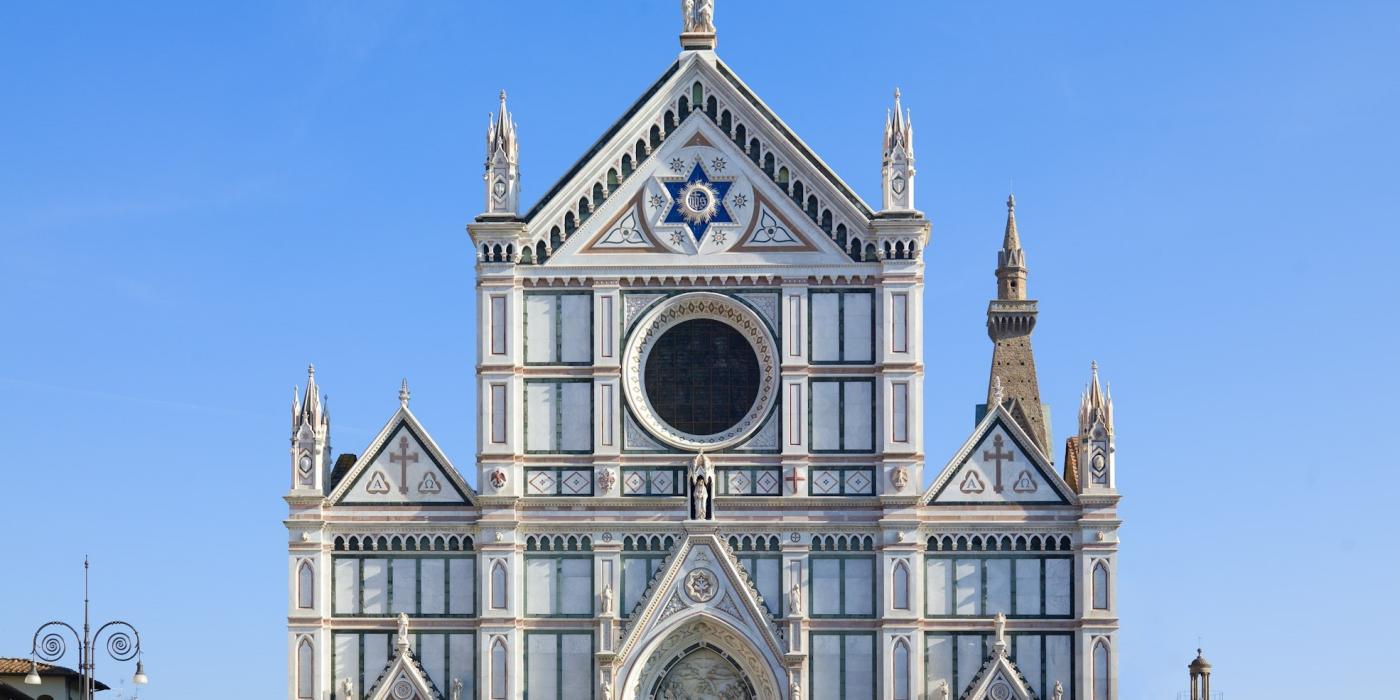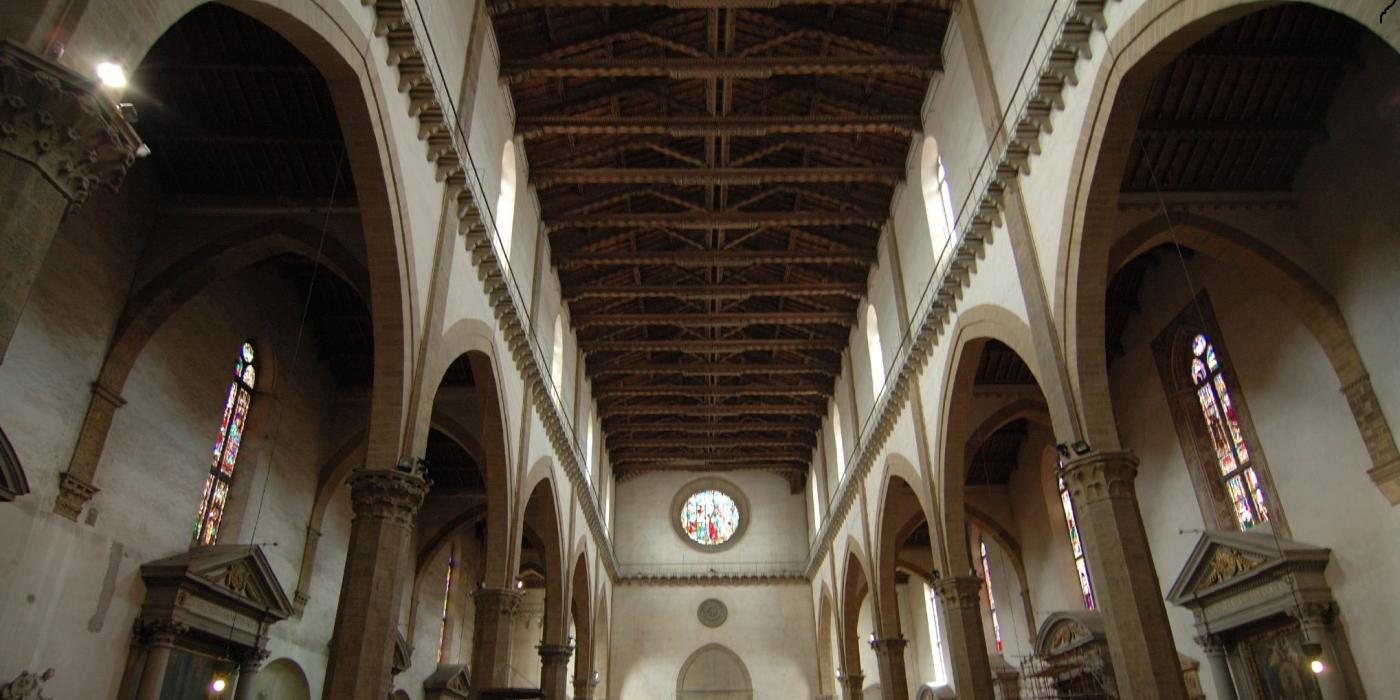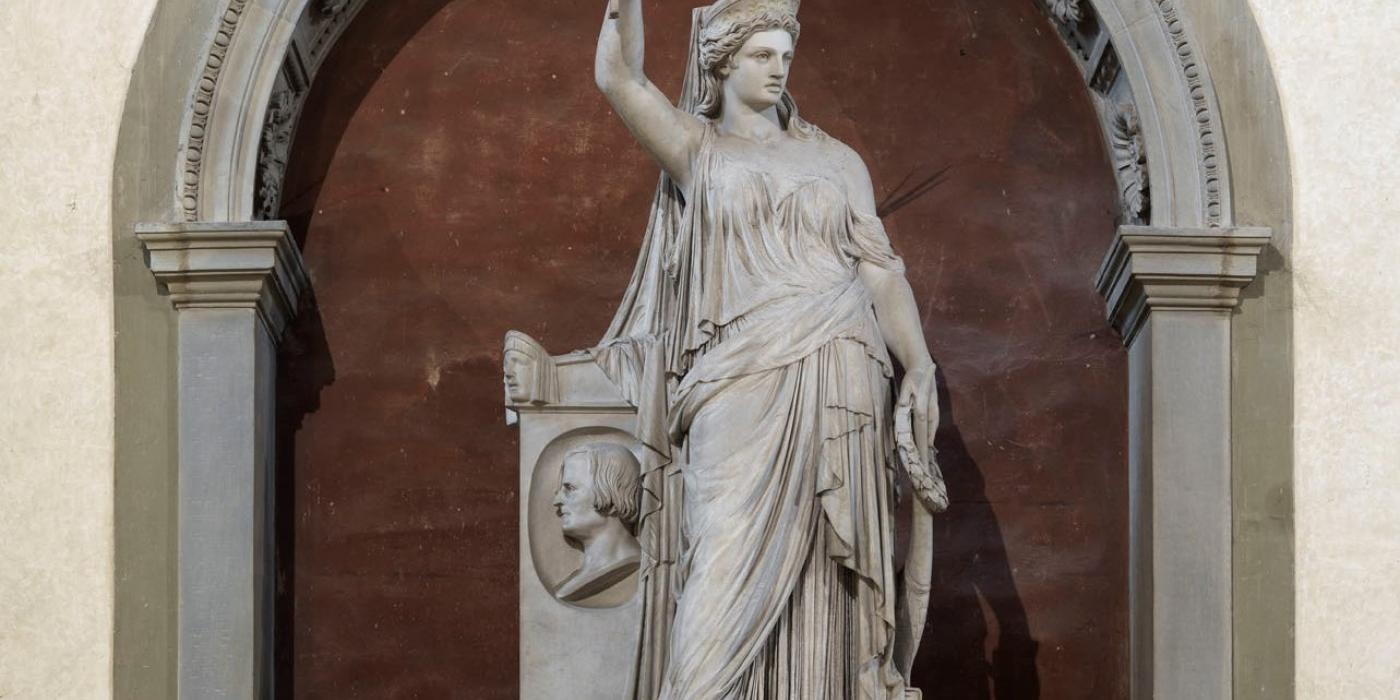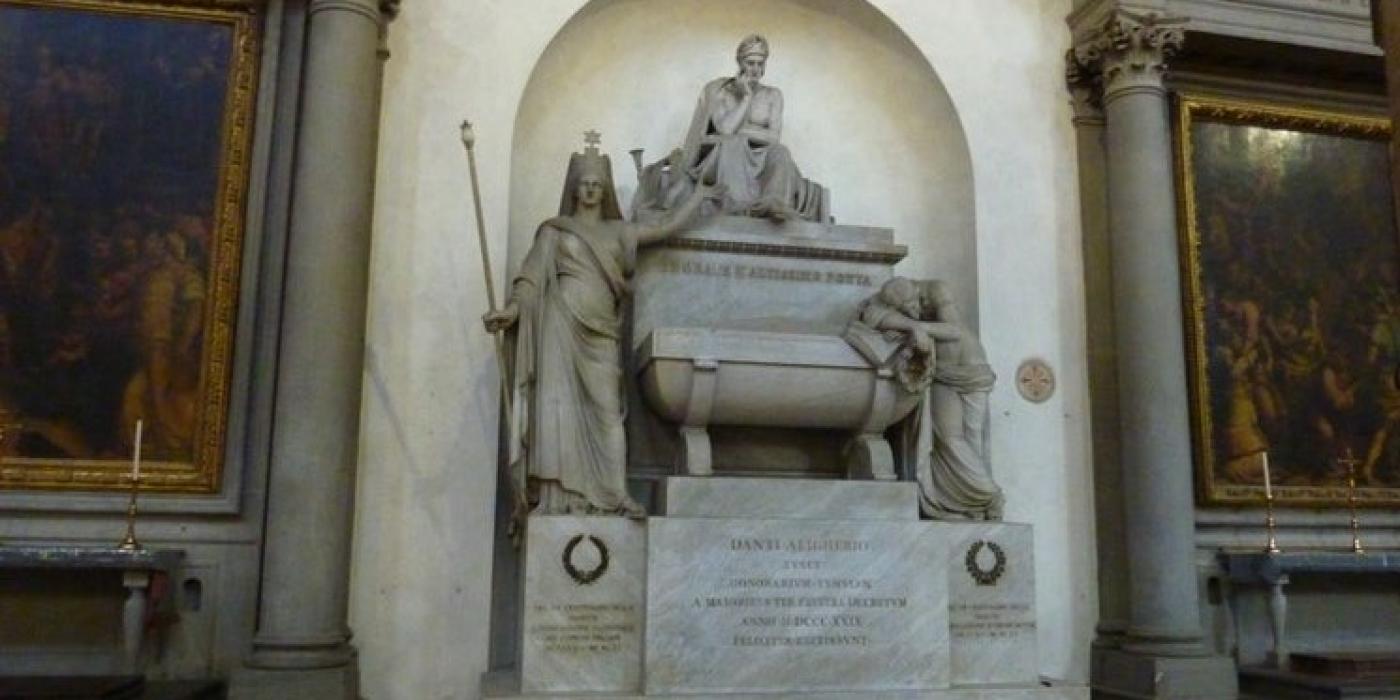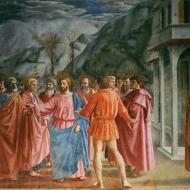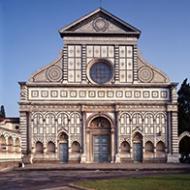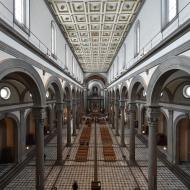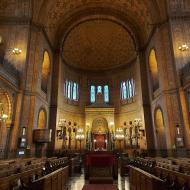The Franciscan church of Santa Croce is one of the most appreciated places in Florence for its great artistic heritage, the civil value of its funerary monuments and above all, because this large structure symbolises the relation between Christian faith, art and culture in Florence and Italy. Its construction began in 1295, paid for by the population and the Florentine Republic and, since that moment, its story has been deeply interlaced with the history of the city. Indeed, over the centuries, spiritual, artistic and civil testimonies trace its complex identity; in the 19th century it became a monument representing the unity of the new nation.
The large church, cloisters and museum complex features feature an array of important works by artists over the centuries. Certainly a don’t miss area of the church are the two chapels decorated by Giotto, the proto-Renaissance painter. The Bardi Chapel is the better preserved of the two, telling stories of the life of Sant Francis in a clear narrative style that would change the way painters told stories in the next century. The exceptional frescoes that surround the high altar, by Agnolo Gaddi, illustrate the Legend of the True Cross, a topic dictated by the dedication of the church. Numerous works by Donatello can be found in Santa Croce, from the delicate pietra serena Annunciation of the Virgin to the Saint Louis of Toulouse bronze located in the museum. The Pazzi Chapel by Brunelleschi, accessed by the first cloister, is an architectural wonder in and of itself and a brilliant comparison to the the artist’s earlier Old Sacristy at San Lorenzo. The vast complex and layers of history of Santa Croce are like an art historical textbook presenting centuries of works next to each other, ready for comparison.
Due to 19th-century interventions, Santa Croce was defined “the Pantheon of the Italian glories” with the erection of tombs of and monuments to famous figures like Michelangelo Buonarroti, Galileo Galilei, Niccolò Machiavelli, Gioachino Rossini, Lorenzo Ghiberti, Vittorio Alfieri, Ugo Foscolo.
The large church, cloisters and museum complex features feature an array of important works by artists over the centuries. Certainly a don’t miss area of the church are the two chapels decorated by Giotto, the proto-Renaissance painter. The Bardi Chapel is the better preserved of the two, telling stories of the life of Sant Francis in a clear narrative style that would change the way painters told stories in the next century. The exceptional frescoes that surround the high altar, by Agnolo Gaddi, illustrate the Legend of the True Cross, a topic dictated by the dedication of the church. Numerous works by Donatello can be found in Santa Croce, from the delicate pietra serena Annunciation of the Virgin to the Saint Louis of Toulouse bronze located in the museum. The Pazzi Chapel by Brunelleschi, accessed by the first cloister, is an architectural wonder in and of itself and a brilliant comparison to the the artist’s earlier Old Sacristy at San Lorenzo. The vast complex and layers of history of Santa Croce are like an art historical textbook presenting centuries of works next to each other, ready for comparison.
Due to 19th-century interventions, Santa Croce was defined “the Pantheon of the Italian glories” with the erection of tombs of and monuments to famous figures like Michelangelo Buonarroti, Galileo Galilei, Niccolò Machiavelli, Gioachino Rossini, Lorenzo Ghiberti, Vittorio Alfieri, Ugo Foscolo.
Information:
Address:
piazza Santa Croce, 50122 - Firenze, FIPhone:
055 2466105
Access notes:
Access directly from the reserved entrance and entry into the first available visit slot.
The last admission is one hour before closing.
Rules for Visitors
- In view of the site's religious nature all visitors are expected to dress appropriately, covering their shoulders and legs. Disposable robes are available free of charge.
- Santa Croce is both a monument and a house of prayer. As a mark of respect for all, we would kindly ask you to avoid talking and to behave appropriately throughout your visit.
- Please help us to preserve Santa Croce's heritage by not touching the works of art or the monuments, and by refraining from eating or drinking anywhere on the site.
- Souvenir photography is permitted without a tripod or a flash, and strictly for private use only.
- Mobile phones should be switched to silent mode and may only be used for taking photographs or for downloading and using the official SANTA CROCE App.
- Animals are not allowed in the complex. Visitors with impaired sight or hearing who use guide-dogs are kindly requested to produce a statutory declaration.
- Smoking is strictly prohibited throughout the site, including in outdoor areas.
Access for disabled:
People with disabilities are admitted to the site via the ramp at the side of the basilica or via the raised platform at the entrance to the cloister on Piazza Santa Croce. The nave and aisles of the basilica are easy to move about in, and only a handful of areas in the complex suffer from limited access.
Visitors with impaired sight or hearing may access the site with their guide-dogs on condition that they can produce a statutory declaration.
Photo gallery
Museum timetables:
Related museums
